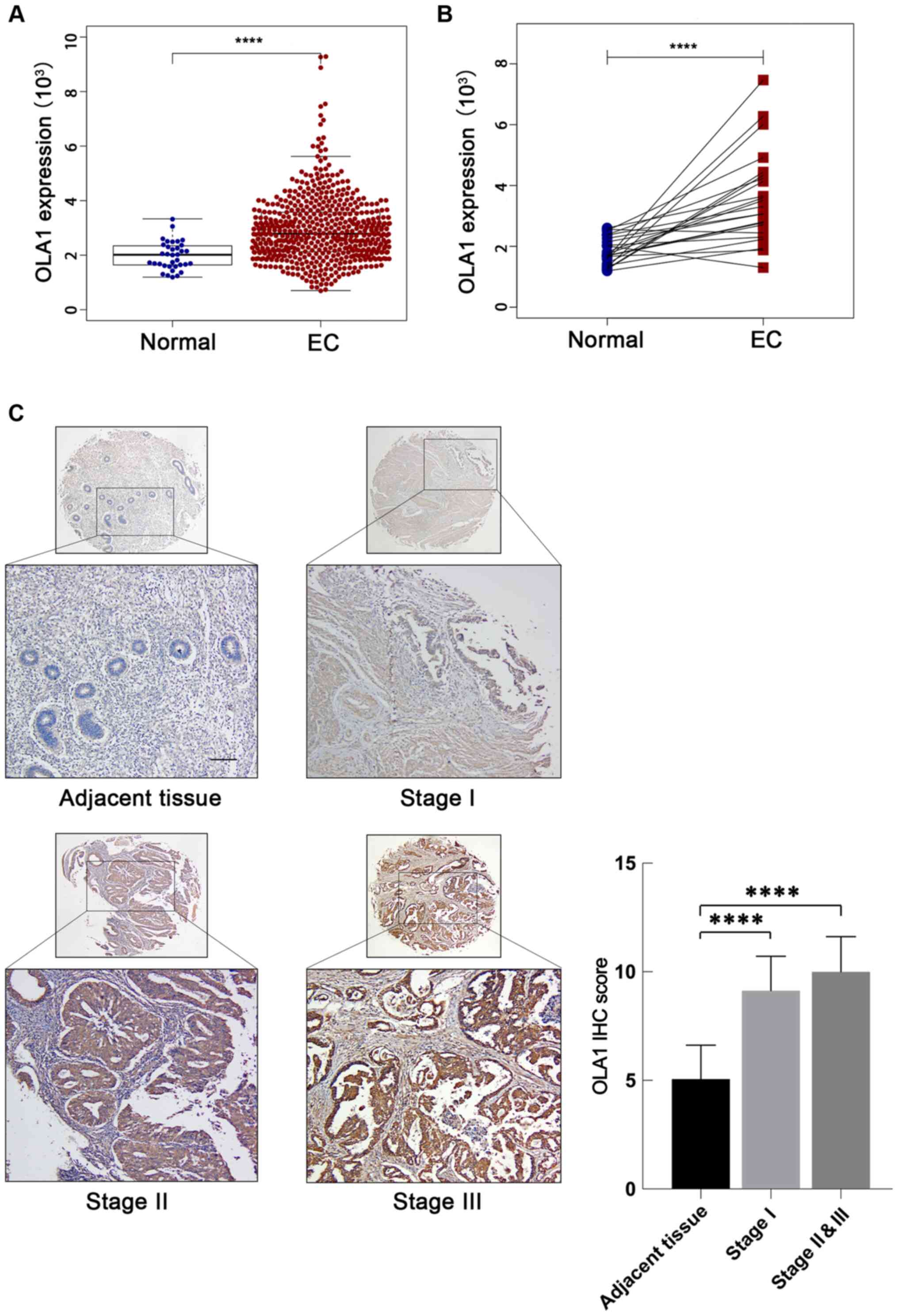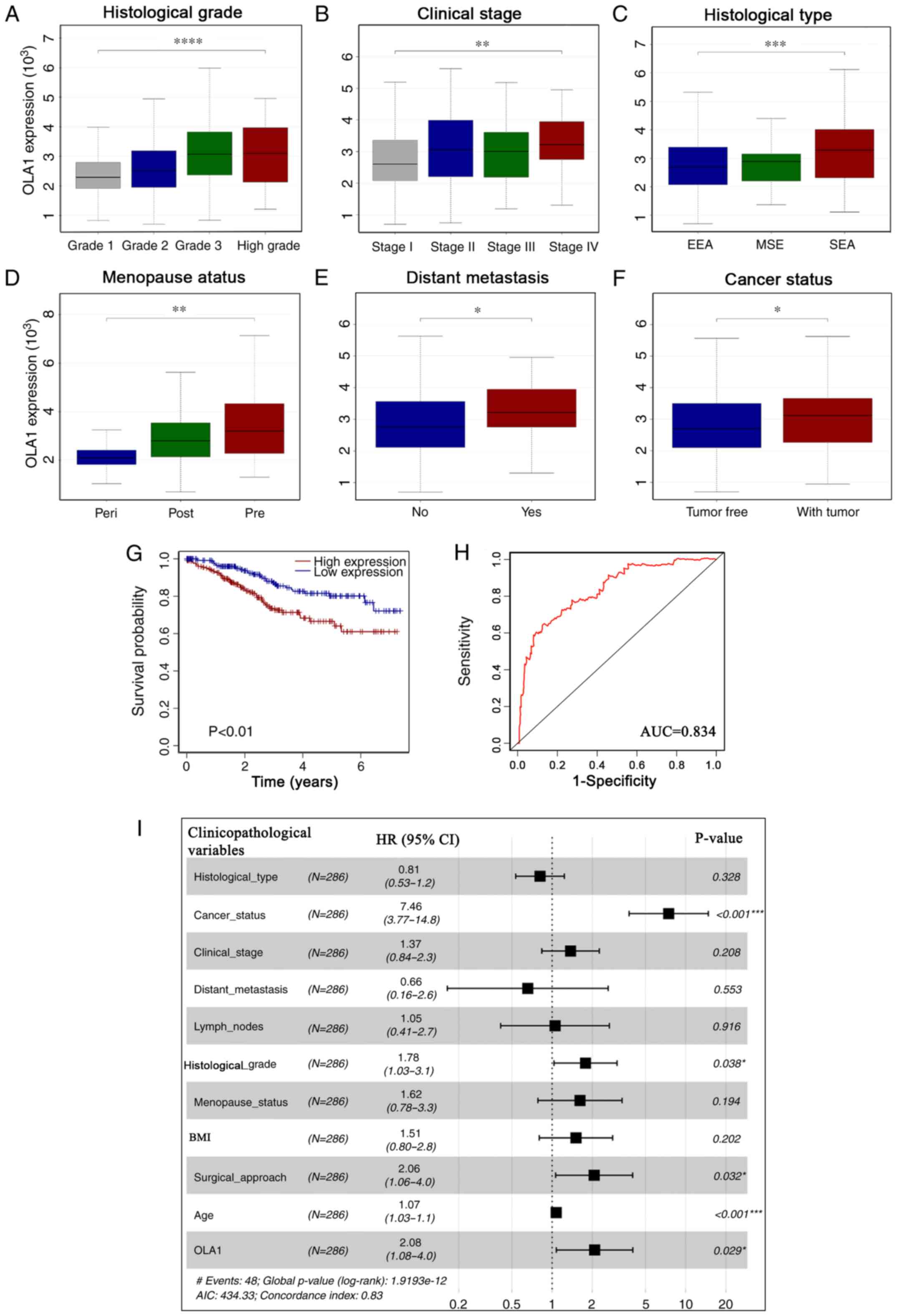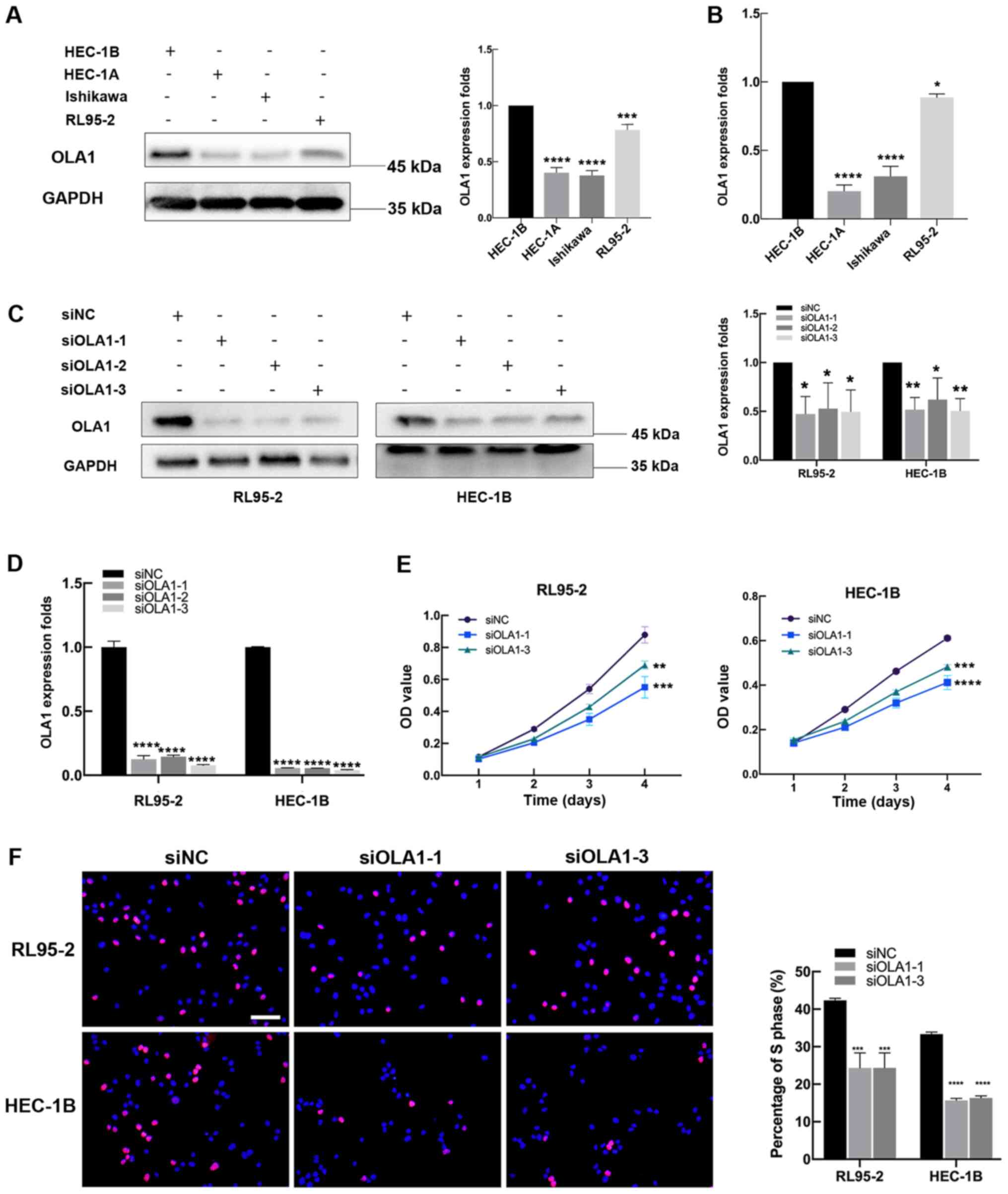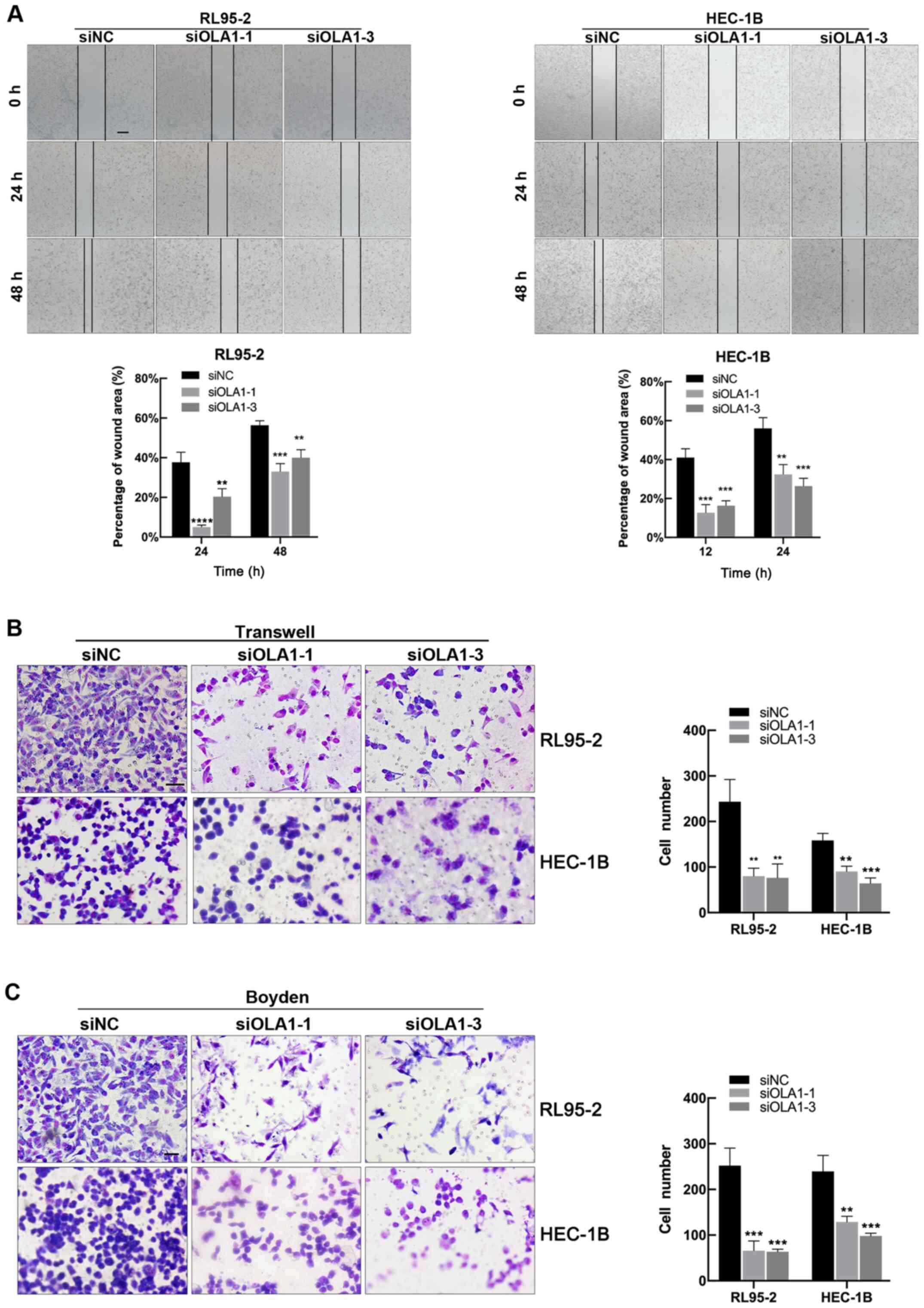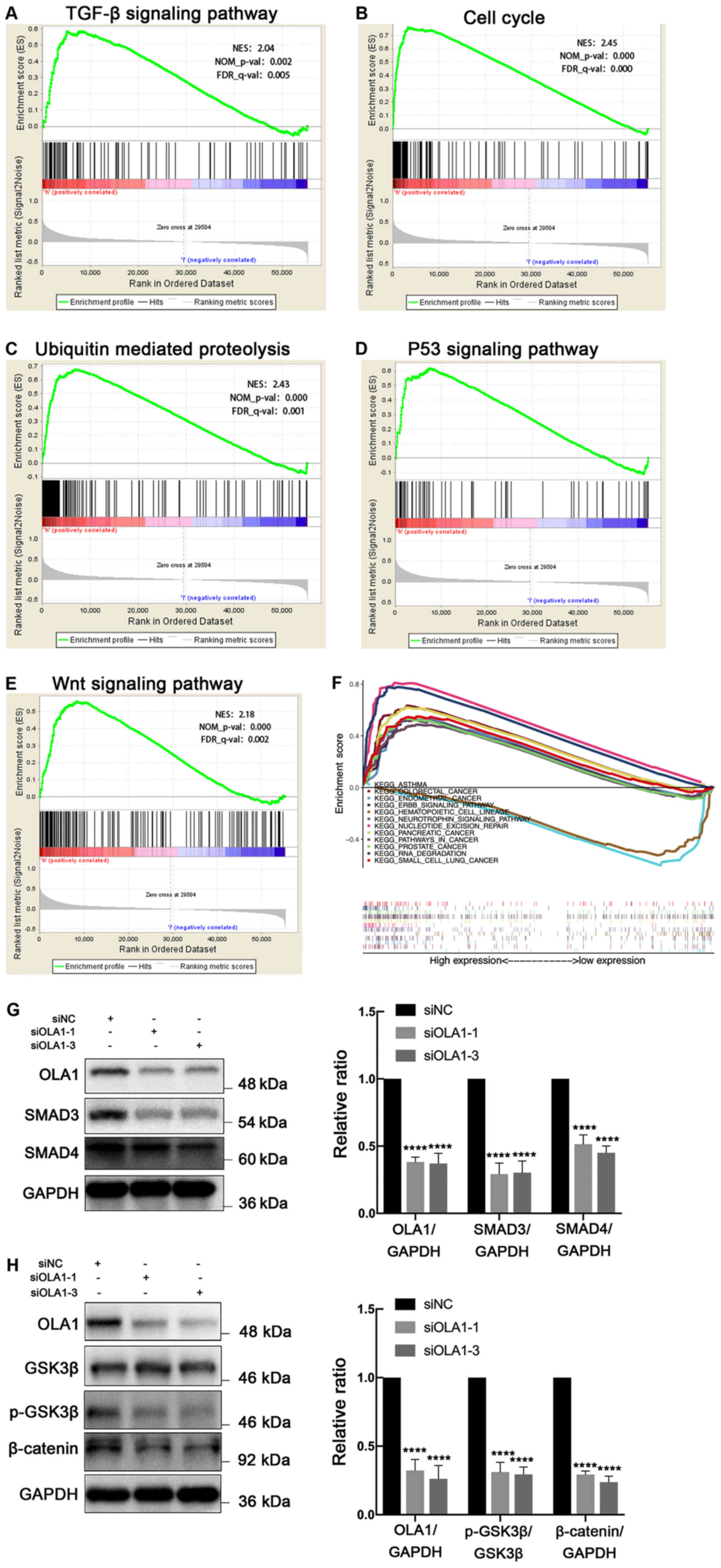|
1
|
Siegel RL, Miller KD and Jemal A: Cancer
statistics, 2020. CA Cancer J Clin. 70:7–30. 2020. View Article : Google Scholar : PubMed/NCBI
|
|
2
|
Siegel RL, Miller KD, Fuchs HE and Jemal
A: Cancer statistics, 2021. CA Cancer J Clin. 71:7–33. 2021.
View Article : Google Scholar : PubMed/NCBI
|
|
3
|
Lortet-Tieulent J, Ferlay J, Bray F and
Jemal A: International patterns and trends in endometrial cancer
incidence, 1978–2013. J Natl Cancer Inst. 110:354–361. 2018.
View Article : Google Scholar : PubMed/NCBI
|
|
4
|
Connor EV and Rose PG: Management
strategies for recurrent endometrial cancer. Expert Rev Anticancer
Ther. 18:873–885. 2018. View Article : Google Scholar : PubMed/NCBI
|
|
5
|
Hamilton CA, Cheung MK, Osann K, Chen L,
Teng NN, Longacre TA, Powell MA, Hendrickson MR, Kapp DS and Chan
JK: Uterine papillary serous and clear cell carcinomas predict for
poorer survival compared to grade 3 endometrioid corpus cancers. Br
J Cancer. 94:642–646. 2006. View Article : Google Scholar : PubMed/NCBI
|
|
6
|
Morice P, Leary A, Creutzberg C,
Abu-Rustum N and Darai E: Endometrial cancer. Lancet.
387:1094–1108. 2016. View Article : Google Scholar : PubMed/NCBI
|
|
7
|
Janda M, Gebski V, Brand A, Hogg R,
Jobling TW, Land R, Manolitsas T, McCartney A, Nascimento M,
Neesham D, et al: Quality of life after total laparoscopic
hysterectomy versus total abdominal hysterectomy for stage I
endometrial cancer (LACE): A randomised trial. Lancet Oncol.
11:772–780. 2010. View Article : Google Scholar : PubMed/NCBI
|
|
8
|
Neri M, Peiretti M, Melis GB, Piras B,
Vallerino V, Paoletti AM, Madeddu C, Scartozzi M and Mais V:
Systemic therapy for the treatment of endometrial cancer. Expert
Opin Pharmacother. 20:2019–2032. 2019. View Article : Google Scholar : PubMed/NCBI
|
|
9
|
Brooks RA, Fleming GF, Lastra RR, Lee NK,
Moroney JW, Son CH, Tatebe K and Veneris JL: Current
recommendations and recent progress in endometrial cancer. CA
Cancer J Clin. 69:258–279. 2019.PubMed/NCBI
|
|
10
|
Leipe DD, Koonin EV and Aravind L:
Evolution and classification of P-loop kinases and related
proteins. J Mol Biol. 333:781–815. 2003. View Article : Google Scholar : PubMed/NCBI
|
|
11
|
Ding Z, Liu Y, Rubio V, He J, Minze LJ and
Shi ZZ: OLA1, a translational regulator of p21, maintains optimal
cell proliferation necessary for developmental progression. Mol
Cell Biol. 36:2568–2582. 2016. View Article : Google Scholar : PubMed/NCBI
|
|
12
|
Zhang J, Rubio V, Lieberman MW and Shi ZZ:
OLA1, an Obg-like ATPase, suppresses antioxidant response via
nontranscriptional mechanisms. Proc Natl Acad Sci USA.
106:15356–15361. 2009. View Article : Google Scholar : PubMed/NCBI
|
|
13
|
Jeyabal PV, Rubio V, Chen H, Zhang J and
Shi ZZ: Regulation of cell-matrix adhesion by OLA1, the Obg-like
ATPase 1. Biochem Biophys Res Commun. 444:568–574. 2014. View Article : Google Scholar : PubMed/NCBI
|
|
14
|
Mao RF, Rubio V, Chen H, Bai L, Mansour OC
and Shi ZZ: OLA1 protects cells in heat shock by stabilizing HSP70.
Cell Death Dis. 4:e4912013. View Article : Google Scholar : PubMed/NCBI
|
|
15
|
Rosenzweig R, Nillegoda NB, Mayer MP and
Bukau B: The Hsp70 chaperone network. Nat Rev Mol Cell Biol.
20:665–680. 2019. View Article : Google Scholar : PubMed/NCBI
|
|
16
|
Schultz A, Olorundami OA, Teng RJ,
Jarzembowski J, Shi ZZ, Kumar SN, Pritchard K Jr, Konduri GG and
Afolayan AJ: Decreased OLA1 (Obg-Like ATPase-1) expression drives
ubiquitin-proteasome pathways to downregulate mitochondrial SOD2
(superoxide dismutase) in persistent pulmonary hypertension of the
newborn. Hypertension. 74:957–966. 2019. View Article : Google Scholar : PubMed/NCBI
|
|
17
|
Bai L, Yu Z, Zhang J, Yuan S, Liao C,
Jeyabal PV, Rubio V, Chen H, Li Y and Shi ZZ: OLA1 contributes to
epithelial-mesenchymal transition in lung cancer by modulating the
GSK3β/snail/E-cadherin signaling. Oncotarget. 7:10402–10413. 2016.
View Article : Google Scholar : PubMed/NCBI
|
|
18
|
Zhang JW, Rubio V, Zheng S and Shi ZZ:
Knockdown of OLA1, a regulator of oxidative stress response,
inhibits motility and invasion of breast cancer cells. J Zhejiang
Univ Sci B. 10:796–804. 2009. View Article : Google Scholar : PubMed/NCBI
|
|
19
|
Liu J, Miao X, Xiao B, Huang J, Tao X,
Zhang J, Zhao H, Pan Y, Wang H, Gao G and Xiao GG: Obg-like ATPase
1 enhances chemoresistance of breast cancer via activation of
TGF-β/Smad axis cascades. Front Pharmacol. 11:6662020. View Article : Google Scholar : PubMed/NCBI
|
|
20
|
Yoshino Y, Qi H, Fujita H, Shirota M, Abe
S, Komiyama Y, Shindo K, Nakayama M, Matsuzawa A, Kobayashi A, et
al: BRCA1-interacting protein OLA1 requires interaction with BARD1
to regulate centrosome number. Mol Cancer Res. 16:1499–1511. 2018.
View Article : Google Scholar : PubMed/NCBI
|
|
21
|
Matsuzawa A, Kanno S, Nakayama M,
Mochiduki H, Wei L, Shimaoka T, Furukawa Y, Kato K, Shibata S,
Yasui A, et al: The BRCA1/BARD1-interacting protein OLA1 functions
in centrosome regulation. Mol Cell. 53:101–114. 2014. View Article : Google Scholar : PubMed/NCBI
|
|
22
|
Takahashi M, Chiba N, Shimodaira H,
Yoshino Y, Mori T, Sumii M, Nomizu T and Ishioka C: OLA1 gene
sequencing in patients with BRCA1/2 mutation-negative suspected
hereditary breast and ovarian cancer. Breast Cancer. 24:336–340.
2017. View Article : Google Scholar : PubMed/NCBI
|
|
23
|
Li Y, Liang L, Dai W, Cai G, Xu Y, Li X,
Li Q and Cai S: Prognostic impact of programed cell death-1 (PD-1)
and PD-ligand 1 (PD-L1) expression in cancer cells and tumor
infiltrating lymphocytes in colorectal cancer. Mol Cancer.
15:552016. View Article : Google Scholar : PubMed/NCBI
|
|
24
|
Guo S, Xiao Y, Li D, Jiang Q, Zhu L, Lin
D, Jiang H, Chen W, Wang L, Liu C, et al: PGK1 and GRP78
overexpression correlates with clinical significance and poor
prognosis in Chinese endometrial cancer patients. Oncotarget.
9:680–690. 2017. View Article : Google Scholar : PubMed/NCBI
|
|
25
|
Zhang YF, Xu QX, Liao LD, Xu XE, Wu JY,
Shen J, Wu ZY, Shen JH, Li EM and Xu LY: κ-Opioid receptor in the
nucleus is a novel prognostic factor of esophageal squamous cell
carcinoma. Hum Pathol. 44:1756–1765. 2013. View Article : Google Scholar : PubMed/NCBI
|
|
26
|
Xiao YY, Lin L, Li YH, Jiang HP, Zhu LT,
Deng YR, Lin D, Chen W, Zeng CY, Wang LJ, et al: ZEB1 promotes
invasion and metastasis of endometrial cancer by interacting with
HDGF and inducing its transcription. Am J Cancer Res. 9:2314–2330.
2019.PubMed/NCBI
|
|
27
|
Livak KJ and Schmittgen TD: Analysis of
relative gene expression data using real-time quantitative PCR and
the 2(-Delta Delta C(T)) method. Methods. 25:402–408. 2001.
View Article : Google Scholar : PubMed/NCBI
|
|
28
|
R Core Team: R: A language and environment
for statistical computing. R Foundation for Statistical Computing;
Vienna, Austria: 2012
|
|
29
|
Chigri F, Sippel C, Kolb M and Vothknecht
UC: Arabidopsis OBG-like GTPase (AtOBGL) is localized in
chloroplasts and has an essential function in embryo development.
Mol Plant. 2:1373–1383. 2009. View Article : Google Scholar : PubMed/NCBI
|
|
30
|
Maiti P, Kim HJ, Tu YT and Barrientos A:
Human GTPBP10 is required for mitoribosome maturation. Nucleic
Acids Res. 46:11423–11437. 2018.PubMed/NCBI
|
|
31
|
Urick ME and Bell DW: Clinical
actionability of molecular targets in endometrial cancer. Nat Rev
Cancer. 19:510–521. 2019. View Article : Google Scholar : PubMed/NCBI
|
|
32
|
de Boer SM, Powell ME, Mileshkin L,
Katsaros D, Bessette P, Haie-Meder C, Ottevanger PB, Ledermann JA,
Khaw P, Colombo A, et al: Adjuvant chemoradiotherapy versus
radiotherapy alone for women with high-risk endometrial cancer
(PORTEC-3): Final results of an international, open-label,
multicentre, randomised, phase 3 trial. Lancet Oncol. 19:295–309.
2018. View Article : Google Scholar : PubMed/NCBI
|
|
33
|
Flanagan DJ, Vincan E and Phesse TJ: Wnt
signaling in cancer: Not a binary ON:OFF switch. Cancer Res.
79:5901–5906. 2019. View Article : Google Scholar : PubMed/NCBI
|
|
34
|
Kaemmerer E, Jeon MK, Berndt A, Liedtke C
and Gassler N: Targeting Wnt signaling via notch in intestinal
carcinogenesis. Cancers (Basel). 11:5552019. View Article : Google Scholar : PubMed/NCBI
|
|
35
|
Nusse R and Clevers H: Wnt/β-catenin
signaling, disease, and emerging therapeutic modalities. Cell.
169:985–999. 2017. View Article : Google Scholar : PubMed/NCBI
|
|
36
|
Wang HX, Sharma C, Knoblich K, Granter SR
and Hemler ME: EWI-2 negatively regulates TGF-β signaling leading
to altered melanoma growth and metastasis. Cell Res. 25:370–385.
2015. View Article : Google Scholar : PubMed/NCBI
|
|
37
|
Batlle E and Massagué J: Transforming
growth factor-β signaling in immunity and cancer. Immunity.
50:924–940. 2019. View Article : Google Scholar : PubMed/NCBI
|
|
38
|
Jung B, Staudacher JJ and Beauchamp D:
Transforming growth factor β superfamily signaling in development
of colorectal cancer. Gastroenterology. 152:36–52. 2017. View Article : Google Scholar : PubMed/NCBI
|
|
39
|
Hu C, Ni Z, Li BS, Yong X, Yang X, Zhang
JW, Zhang D, Qin Y, Jie MM, Dong H, et al: hTERT promotes the
invasion of gastric cancer cells by enhancing FOXO3a ubiquitination
and subsequent ITGB1 upregulation. Gut. 66:31–42. 2017. View Article : Google Scholar : PubMed/NCBI
|
|
40
|
Mani A and Gelmann EP: The
ubiquitin-proteasome pathway and its role in cancer. J Clin Oncol.
23:4776–4789. 2005. View Article : Google Scholar : PubMed/NCBI
|















